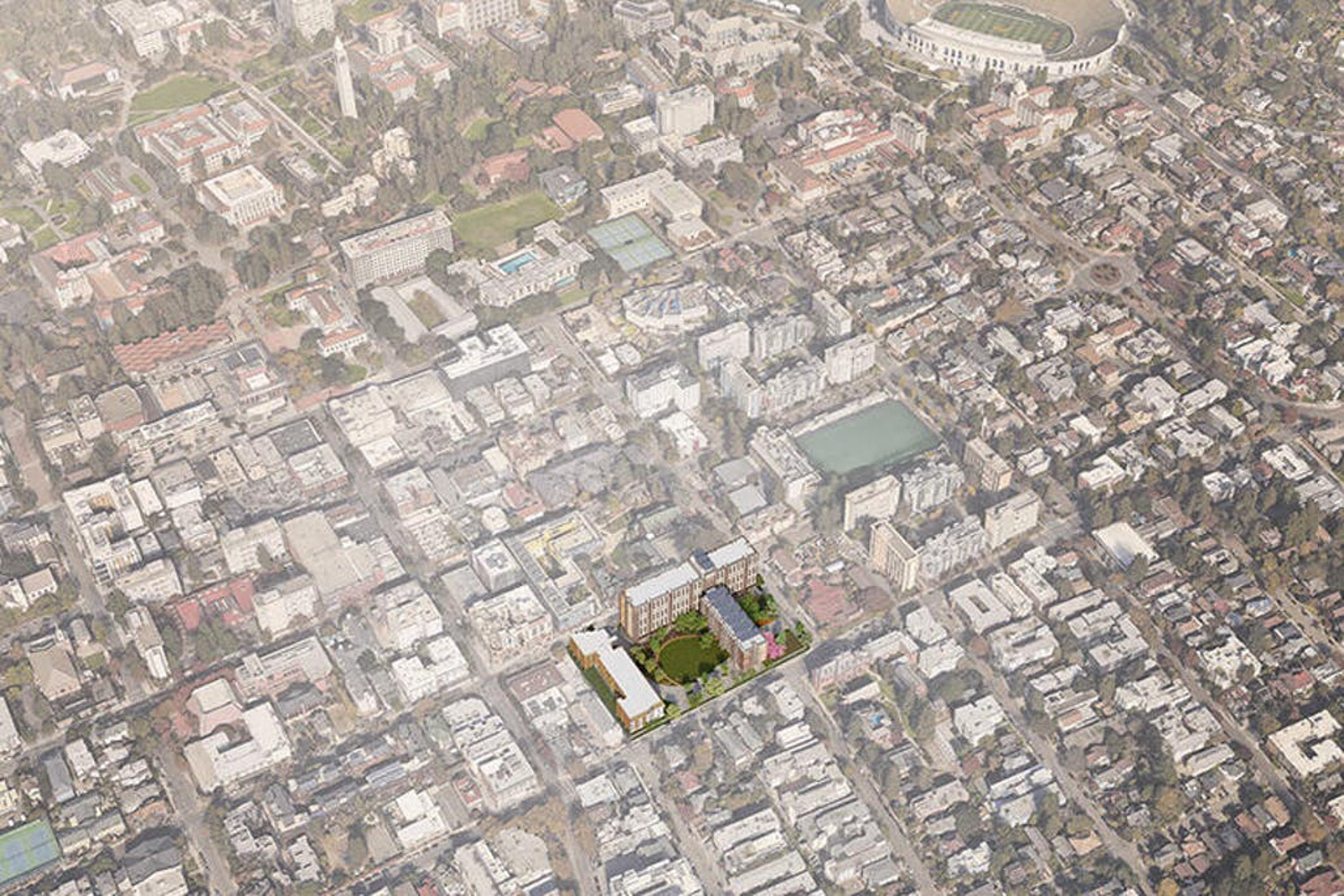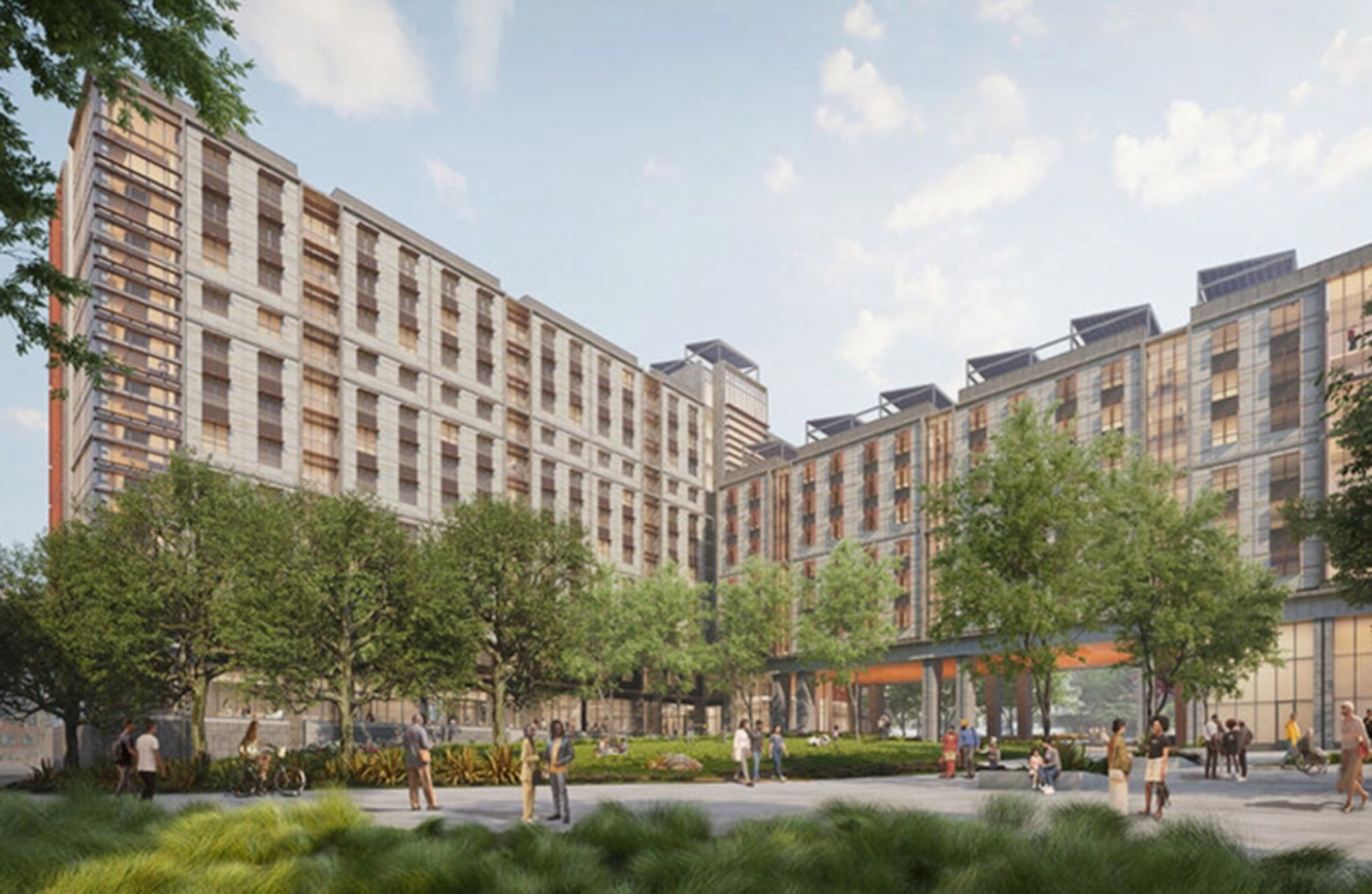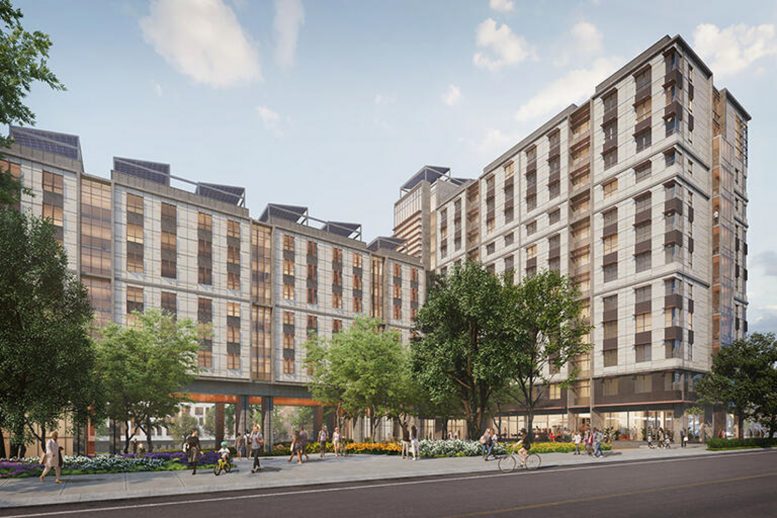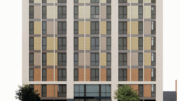The UC Board of Regents has approved plans for UC Berkeley construct a $312 million mixed-housing project to replace the historically significant People’s Park in Southside, Berkeley. The L-shaped complex would take up less than half of the existing park to create housing for 1,113 university students and roughly a hundred units for extremely low income, unhoused, or formerly unhoused people. 1.7 acres of the 2.8-acre park would become landscaped open space.

People’s Park and surrounding transit connections, image via SITELAB Urban Studio
LMS Architects and Hood Design Studio are responsible for the architecture. The six-to-twelve story development will form around a tree-lined public park with a circular core along Dwight Way and a smaller park area at the corner of Dwight Way and Bowditch Street.

People’s Park complex market with indoor outdoor seating, image via UC Regent
SITELAB Urban Studio assisted with the master plan for the development. Describing the final product, SITELAB writes that “UC Berkeley’s People’s Park project includes student housing, supportive housing and services for formerly homeless and very low-income residents, and a safe and welcoming open space that commemorates the significant history of the location.
Construction could start as soon as 2022, with completion within three years of groundbreaking.

People’s Park complex aerial view, image via UC Regent design by LMS Architects and Hood Design Studio
The University of California has attempted to build on the park in the past, though failed each time before. This current plan appears to be the most likely to succeed as the project offers a series of community benefits responding directly to neighborhood feedback. That said, the project still faces roadblocks, including the lawsuit filed by a team of lawyers representing Make UC a Good Neighbor and the People’s Park Historic Advocacy Group (PPHDAG). The movement hopes to maintain the park in its existing form and keep the rent-controlled homes at 1921 Walnut Street.

People’s Park and surrounding area, image via SITELAB Urban Studio
The People’s Park history extends from the 1950s to the present day. In many ways, it embodies the city’s identity as a counter-cultural capital. UC Berkeley purchased the former residences the had occupied the 2.8-acre site and, in 1968, demolished the area with plans to build student housing. However, before construction could start, the open lot became an epicenter for many anti-Vietnam war protests in the city. Because of its proximity to the campus and Telegraph Avenue, the area evolved into an open park.

People’s Park, image via Google Satellite
In 1969, an anti-war protest ended with the police using live rounds, injuring many and killing James Rector, a 25-year old bystander student struck by a stray bullet. The day is remembered as ‘Bloody Thursday.’ In more recent history, People’s Park has been an unparalleled anchor for the unhoused community in the East Bay with food distribution and other mutual aid programs on-site. This has fueled much of the controversy against any plans to demolish People’s Park.

People’s Park complex rendering, image via UC Regent design by LMS Architects and Hood Design Studio
However, the most recent plan has gotten further than expected. UC Berkeley Chancellor Carol Christ has led a campaign to publicize the project details and invite community feedback. The core message for UC Berkeley: the project would address Berkeley’s student housing crisis, provide permanent housing for unhoused and extremely low-income households, commemorate the park’s history, and retain 1.7 acres of open space. UC Berkeley can only house about 23% of its students, the lowest of any UC campus.

People’s Park aerial elevation focusing on the proposed open space, image via UC Berkeley
Christ stated, “I think this is the most critical problem Berkeley is facing…Berkeley is a land-constrained campus, and we have to use every piece of land we have in order to meet our goals for student housing.”
Subscribe to YIMBY’s daily e-mail
Follow YIMBYgram for real-time photo updates
Like YIMBY on Facebook
Follow YIMBY’s Twitter for the latest in YIMBYnews






Let’s get this built. The current on-site residential experience is a failed experiment. 100(!) VLI units is unprecedented and will offer much needed relief for the city’s unhoused population. 1000(!) student dwellings will cap the student residential drought.
We all acknowledge the site’s historical significance. In lieu of California’s housing crisis, the university carries a duty to adapt to our collective desire for meaningful change.